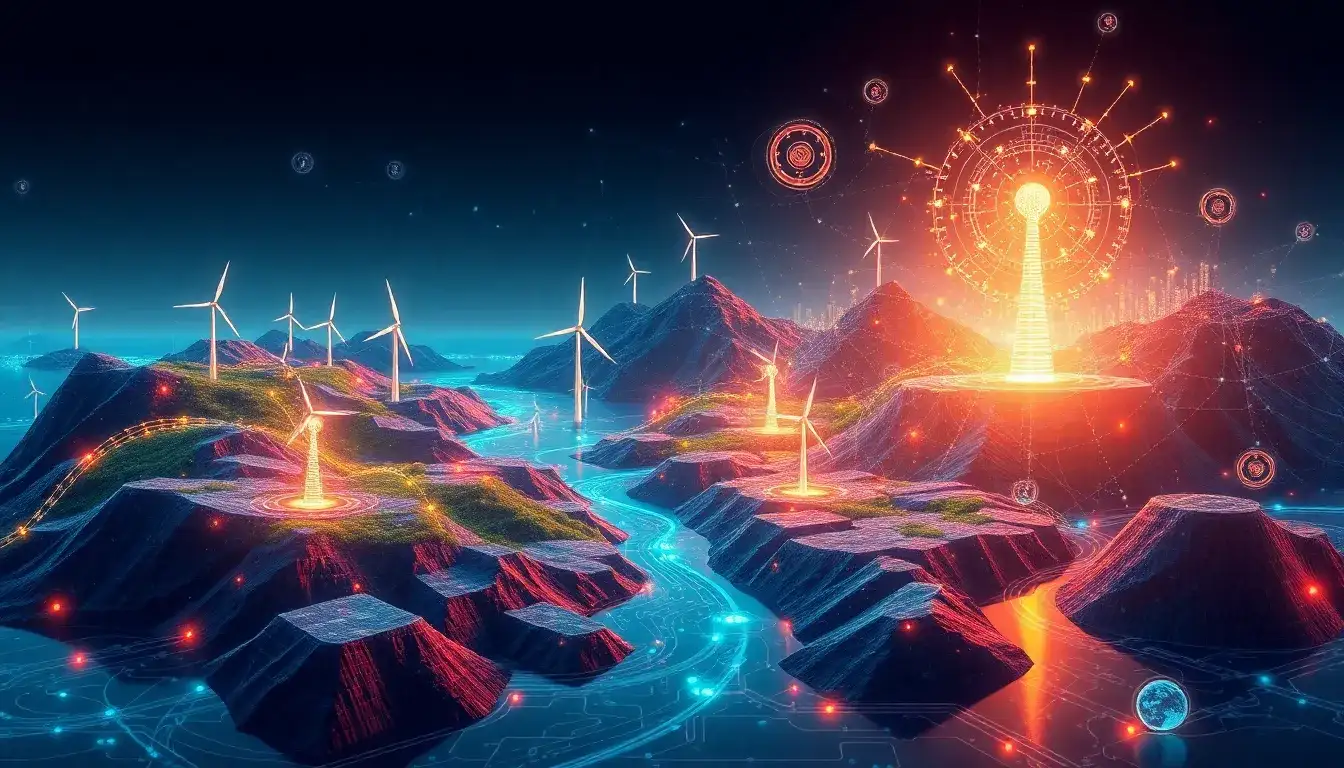
Advancing AI-Enabled Techniques in Energy System Modeling: A Review of Data-Driven, Mechanism-Driven, and Hybrid Modeling Approaches
Artificial intelligence (AI) is playing an increasingly crucial role in optimizing energy systems, especially as the complexity of energy management grows and the integration of various renewable sources becomes essential. This review systematically examines AI-enabled modeling approaches, highlighting their applications, limitations, and potential to enhance sustainable energy systems while providing a framework for addressing real-world energy challenges.
Data-driven models excel in predicting energy demand and optimizing resources but are often criticized for their “black-box” nature, where the internal workings are not transparent. In contrast, mechanism-driven models offer deeper insights into system behavior but require significant computational resources and domain expertise. Hybrid models seek to combine the strengths of both approaches, improving prediction accuracy, adaptability, and overall system optimization.
This study discusses relevant policies, modeling techniques, and the key challenges in AI-enabled energy system modeling. It emphasizes how AI techniques are paving the way for future modeling advancements, including the integration and optimization of renewable energy systems, real-time optimization through digital twins, advanced demand-side management, and hybrid simulations of energy markets.
1. Introduction
AI is becoming a vital force in the energy transition, particularly as countries strive to achieve global climate objectives and carbon neutrality. Nations are setting ambitious renewable energy goals, prompting the need for advanced AI-enabled methods for optimizing energy systems and decision-making.
The power of AI and digital technologies, such as big data analytics, lies in their ability to analyze massive datasets, transforming raw data into actionable insights that support real-time monitoring, demand-supply forecasting, and dynamic system adjustments.
Advanced modeling techniques, including data-driven, mechanism-driven, and hybrid modeling approaches, are key to AI’s impact in the energy sector. Data-driven modeling utilizes machine learning and deep learning algorithms to predict changes in energy demand and optimize resource allocation. Mechanism-driven models, grounded in fundamental physical laws, excel in simulating energy conversion processes. Each approach has its strengths and limitations, leading to the emergence of hybrid methods that integrate both to enhance accuracy and adaptability.
2. Global Policy Review for AI in Energy Systems
As countries pursue sustainability and climate targets, digitalization within energy systems is increasingly vital. This transformation supports efficient energy distribution, real-time monitoring, and dynamic demand management, which are crucial for managing rising global energy demands and integrating renewable resources.
Major economies, including the European Union, the United States, and China, are leading the charge in digital innovation within energy sectors. Their policies emphasize the use of digital tools like AI-driven smart grids, predictive algorithms, and data interoperability standards to effectively manage energy resources, engage consumers, and ensure cybersecurity.
3. Main Modeling Approaches in Energy System Modeling
AI-enabled energy system modeling approaches can be broadly categorized into three types: data-driven, mechanism-driven, and hybrid models.
3.1. Data-Driven Energy System Modeling
Data-driven modeling leverages historical data and advanced algorithms to identify patterns and make accurate predictions without relying on the underlying physical properties of a system. This approach is particularly effective for complex, non-linear systems where traditional models may not suffice.
Machine learning techniques play a critical role in this type of modeling, encompassing supervised, unsupervised, reinforcement, and deep learning algorithms. Each category serves distinct purposes, from predicting outcomes based on labeled data to discovering hidden structures in unlabeled datasets.
3.2. Mechanism-Driven Energy System Modeling
Mechanism-driven models are based on physical laws, using mathematical representations to simulate system behavior. They provide accurate insights into energy production, conversion, consumption, and storage, essential for evaluating system stability and optimization strategies.
These models can be categorized into energy flow models, energy simulation models, and energy optimization models, each serving specific applications in energy system analysis.
3.3. Hybrid Energy System Modeling
Hybrid modeling integrates data-driven and mechanism-driven methods, overcoming the limitations of both approaches. By combining the predictive power of data-driven models with the reliability of physics-based models, hybrid models enhance accuracy, adaptability, and robustness.
Applications of hybrid modeling are particularly impactful in energy demand forecasting, intelligent building systems, renewable energy integration, and smart grid operation.
4. Future Avenues for Integrating AI-Enabled Techniques in Energy System Modeling
As the complexities of renewable energy integration and market demands grow, AI-driven modeling techniques offer unmatched capabilities to tackle multidimensional challenges. Future directions for AI-enabled techniques include:
- Integration and optimization for renewable energy systems
- Real-time optimization and predictive maintenance through digital twins
- Advanced demand-side management for optimal energy use
- Hybrid simulation of energy markets and business behavior
5. Conclusions
The integration of AI into energy system modeling signifies a transformative step toward more efficient and adaptive energy management. This review highlights the three primary AI-enabled modeling approaches—data-driven, mechanism-driven, and hybrid models—along with their unique characteristics and practical applications.
The hybrid modeling approach combines the strengths of both data-driven and mechanism-driven models, enhancing precision and interpretability in energy system modeling. As we look to the future, hybrid models are expected to play a central role in optimizing renewable energy integration, real-time optimization, advanced demand-side management, and hybrid simulations of energy markets.
To harness the full potential of hybrid modeling, it is essential to develop efficient algorithms, foster improved data-sharing mechanisms, and strengthen collaboration among researchers, engineers, and policymakers. Overcoming these challenges will pave the way for more adaptive, accurate, and sustainable energy solutions.
Original article by NenPower, If reposted, please credit the source: https://nenpower.com/blog/innovative-ai-techniques-in-energy-system-modeling-a-comprehensive-review-of-data-driven-mechanism-driven-and-hybrid-approaches/


